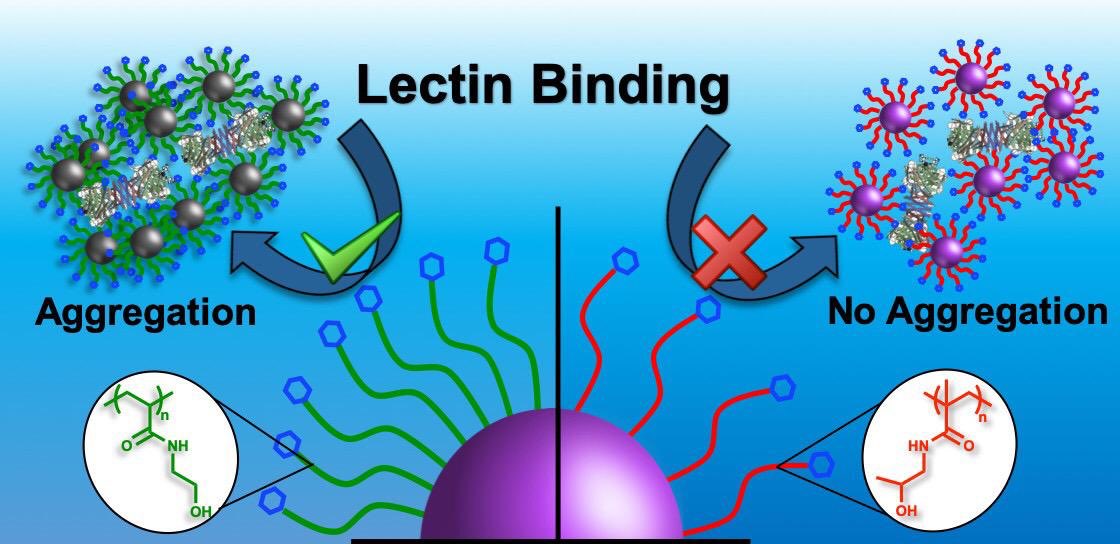The first NanoCarb paper – “Tuning aggregative versus non-aggregative lectin binding with glycosylated nanoparticles by the nature of the polymer ligand” by Panagiotis Georgiou (ESR 3) from the Gibson group in the University of Warwick – has been published on the Journal of Material Chemistry B.
This manuscript explores how polymeric linkers, with glycans at one end, and immobilised onto gold nanoparticles at the other, can modulate the aggregation response of nanoparticles without affecting their overall binding affinity to lectins. This is significant as in the field, aggregation is often used as a proxy for affinity, which this work shows is an over-simplification. This is the first example of using the polymeric linker, rather than the glycans, to tune this response.
A convergent synthetic strategy allowed a nanoparticle library to be screened. By a simple switch from poly(hydroxyethyl acrylamide) to poly(hydroxypropyl methacrylamide), a binary on/off switch was induced in a model lectin binding system, with the latter remaining stable upon addition of lectin. Biolayer interferometry was employed and showed that despite the differences in aggregation, the ability of the glycoparticles to bind immobilised lectins was almost identical.
These findings are significant as in all applications high affinity is required, but controlling aggregation is crucial. For example; in vivo applications require colloidally stable dispersions which do not form large aggregates upon binding. Ex vivo diagnostics, however, require aggregation to induce the red-blue colour shift associated with gold nanoparticles for label-free biosensing. Therefore this study will attract significant interest from the glycomaterials, biosensing and colloid fields.
It is available Open Access on the Journal’s website.
